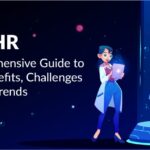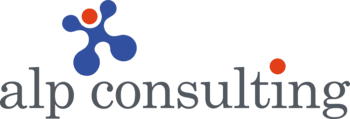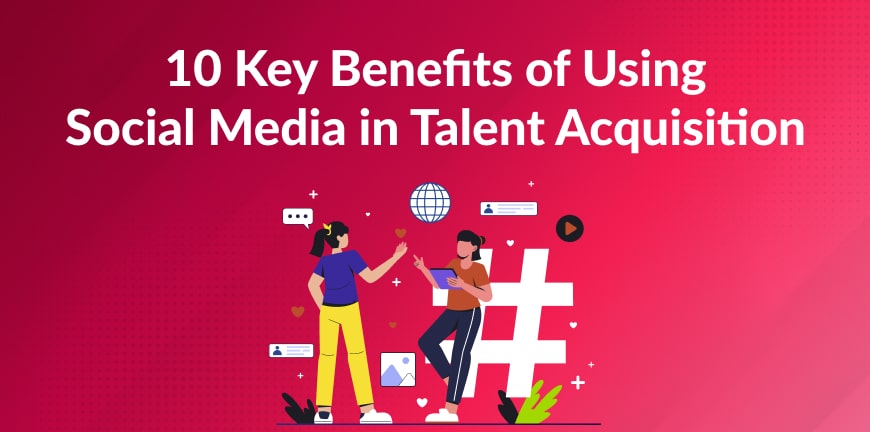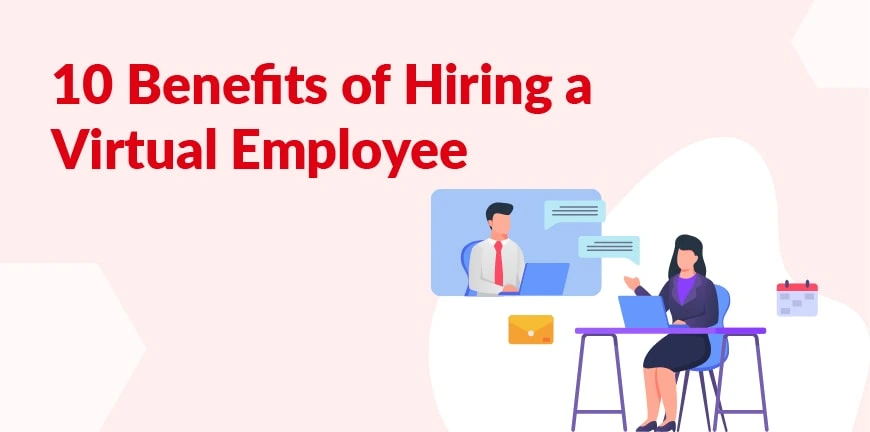
AI in HR: A Comprehensive Guide
13/05/2025
What is the Recruitment Process? Definition, Importance, Stages, Challenges, Methods
15/05/2025Today, the world has gone digital, and its presence is the defining factor for first impressions. Social media has witnessed a massive transformation from a networking tool into a powerhouse for recruitment. Leveraging platforms like LinkedIn, Instagram, Twitter, and Facebook have become significant to connect to broader and diverse candidate pools.
These platforms no longer play the role of mere social hangouts, they are dynamic talent marketplaces where organizations have the scope of discovering, engaging, and attracting world class candidates across the globe.
Recruiters today are empowered by social media enabling them to work beyond traditional hiring and create human connections. With the power of storytelling, real-time engagement, focused targeting social media is not just reforming talent acquisition, it is rewriting the playbook.
What is the Role of Social Media in Talent Acquisition?
The role of social media in talent acquisition is critical in today’s modern hiring landscape. It enables recruiters to access and reach out to a broader talent pool that entails passive job seekers. It also offers an active platform for employers to feature their company culture, values, and employee experience.
Furthermore, social media drives focused and targeted recruitment, cost-effective advertising, and enhanced candidate experiences.
10 Benefits of Social Media in Talent Acquisition
Let us have a look at the top ten benefits of social media in talent acquisition:
1. Wide Reach
Unlike traditional hiring methods, social media platforms drive recruiters to tap into a broader and more diverse talent pool. Job boards mostly will attract active job seekers, however, platforms like LinkedIn, Facebook, Twitter, etc. empower organizations to get in touch with both active and passive candidates who might be currently looking for opportunities and those who may not be job hunting but are on the lookout for new roles when the right opportunity is presented to them.
Recruiters can now engage individuals based on their skills, interests, and online behavior with the help of targeted posts, sponsored content, and direct messaging. This becomes effective to reach out to untapped talents talent that might otherwise remain untapped. This broader talent pool accelerates the scope of identifying and sourcing the candidates who are best fitted for a role while being supportive of diversity and innovation in hiring.
2. Enhanced Employer Branding
Social media and talent acquisition go hand in hand. A company can showcase their culture, values, mission, and everyday work environment with a strong social media presence highlighting an organization’s identity.
Businesses can outline the unique features of their workplace through posts focusing on employee testimonials, behind-the-scenes content, community involvement, and workplace celebrations.
Businesses which display transparency have a chance of building trust and emotional connection with potential candidates. Top talents are attracted to organizations who cater to their personal values offering a positive, inclusive, and engaging work culture.
To get a competitive edge, organizations must consistently reinforce this image through social media making them visible, memorable, and desirable to prospective hires.
3. Enhanced Hiring Process
Another significant role of social media in talent acquisition is its interactive and agile nature enabling hiring managers and employers to identify and engage with potential candidates instantly, significantly cutting down the hiring cycle and diminishing key metrics like time-to-fill.
Social media can provide real-time visibility into candidate interest and activity unlike traditional recruitment methods like newspaper ads or job fairs. Recruiters now make the hiring process more efficient by quickly responding to inquiries and scheduling interviews.
To top it, there are several powerful analytics tools provided by social media enabling organizations to measure the performance of specific job posts and advertising campaigns.
Metrics like impressions, click-through rates, engagement levels and applicant conversion rates help businesses to optimize hiring strategies by providing actionable insights. The data-driven method establishes social media as a strategic tool for effective, agile, and measurable talent acquisition.
4. Improved Candidate Screening
Social media offers valuable insights to recruiters about a candidate’s profile entailing their personality, communication style, interests, and professionalism. This information might not be included in their resume or cover letter. Evaluating platforms like LinkedIn, Twitter, or Instagram accounts, hiring professionals can delve deep into how a candidate presents themselves, their interaction with others, and engagement with their industry or community.
An individual’s tone, language, and content choices can depict their alignment or misalignment with an organization’s values and culture. This additional context is an important tool in reviewing how fit a candidate is culturally also assessing their long-term potential.
For a holistic and authentic hiring process, the evaluation must be conducted ethically and consistently with respect to one’s privacy focusing on job-specific information.
5. Cost-Effective Recruitment
One of the many benefits of social media in talent acquisition is that it has proven a highly cost-effective alternative to traditional recruitment methods helping organizations to optimize their recruitment budgets.
Traditional platforms like print advertising and recruitment agencies can be an expensive affair while several social media platforms enable organizations to post jobs, share content and engage with individuals at very reasonable prices.
Due to its focused targeting, real-time engagement, and broader reach, the return on investment (ROI) by social media is often higher. Based on location, industry, skills ads can be designed by recruiters to make them visible to relevant individuals.
Another way to cut down on additional costs is to promote employee advocacy where existing staff members share job openings within their own networks amplifying reach. The blend of cost-efficiency with speed and analytics makes social media an economical choice in modern talent acquisition.
6. Passive Candidate Engagement
One of the most impactful advantages of social media in recruitment is that it can tap passive candidates who are employed presently and not actively seeking employment but are willing if the right opportunity arises. Conventional job boards, however, typically look out for job seekers, neglecting a significant portion of the talent market.
Recruiters strategically engage the talent pool which Is hidden through platforms like LinkedIn, Instagram, Facebook, and Twitter. They connect and engage with candidates through sharing important content, directly reaching out and personalized messaging.
Organizations can post engaging content entailing company culture, employee testimonials, industry insights, drawing the interest of passive candidates without evading their privacy by building a connection. There are advanced targeting tools enabling recruiters to identify individuals catering to specific skills, roles, and industries, making outreach more relevant.
7. Employee Advocacy Strategy
Employees are integral in enhancing a company’s recruitment initiatives. They play a vital role in amplifying a brand image through social media advocacy. By sharing positive experiences, real time company updates and opening job roles on their personal social networks, they become brand ambassadors.
More than only corporate messaging, the authentic method of advocacy, peer-to-peer promotion helps in building trust and credibility effectively. Potential candidates are likely to get drawn to job opportunities when they are recommended or shared by individuals who are a part of their network, especially if that person seems satisfied with their workplace.
Employee referral programs also become more effective, and the reach is enhanced with social media enabling team members to quickly share job openings with their professional and personal contacts.
The referrals often result in higher-quality hires as they are pre-vetted through trusted internal connections and usually align better with company culture. The recruitment made through referrals also are taken onboard faster, perform better, and their retention rates are often higher.
8. Building Healthy Relationships
A significant social media strategy for talent acquisition is the way it has transformed the way recruiters connect and engage with prospective candidates. Leveraging platforms like LinkedIn, Twitter, Facebook, and Instagram enable recruiters to build and foster relationships even before a job offer is extended.
This method enhances the ways in which recruiters interact with candidates through likes, comments, shares, and direct messages giving it a personalized and human touch to communication.
These connections help create familiarity and trust, making candidates feel valued and respected as individuals rather than just applicants. Companies can highlight their culture, values, achievements and employee experiences through regular posts, stories, and updates.
A brand narrative is created by the ongoing content that builds up resonating with candidates and motivates them to consider and accept offers from organizations they feel aligned with.
9. Dynamic Talent Pipelining
Recruiters are inclined towards identifying the significance of engaging passive candidates, individuals who are not actively job hunting but would consider the role appropriate for them if the right opportunity arises.
These individuals are usually top-quality talent. They are often satisfied in their current roles and not immediately seeking change, establishing that they may bring to the table stability, experience, and a robust history.
Platforms like LinkedIn enable recruiters to review and observe a passive candidate’s posts, networking activities and professional interests. Creating consistent interactions, providing valuable insights into a company recruiter, must ensure that when the right opportunity is presented, these candidates are familiar with the company culture and work environment, enabling them to more quickly respond and eventually accept a relevant role.
10. Data-Driven Decisions
Social media platforms such as LinkedIn, Facebook, Instagram, etc. often have built-in analytics and insights tools allowing recruiters to measure and analyze the effectiveness of their recruitment strategies. The role of social media in talent acquisition is impacted strongly by these tools.
They provide significant data enabling recruiters to make informed, data-driven decisions, rather than relying on guesses. Recruiters can now track how job postings, employer branding content, and engagement initiatives perform across an array of metrics.
They can check the number of individuals clicked on job links or company pages. Likes, shares, comments, and saves typically indicate how compelling or relevant the content is. The recruiters can clearly comprehend the type of content is more attractive and draws the most attention so accordingly they can refine their messaging.
Analytics tools provide data about the specific individuals interacting with recruitment content, allowing recruiters to assess if their target talent pool reach is effective and adjust audience targeting if required.
Frequently Asked Questions (FAQs)
1. What is the role of social media in talent acquisition?
Today’s modern talent acquisition is highly influenced by social media as social media platforms help in broadening the recruitment reach while engaging with potential candidates and accelerating employer branding. It allows recruiters to connect with passive job seekers along with highlighting company culture and values.
2. What social media channel is best for recruiting?
One of the most effective social media channels today for talent acquisition is LinkedIn. Being one of the world’s largest professional networks, it helps a wide number of recruiters find the appropriate match. Other platforms like Facebook and X are also effective as they cater to specific audiences.
3. How do social media and technology help in talent discovery?
The combination of social media and technology of very powerful and the advanced technologies used by social media helps in reaching out to a wide pool of talent and identifying them faster. The search by recruiters is more focused on targeting potential candidates.
4. How can social media improve candidate engagement?
Social media can significantly enhance candidate engagement. They can facilitate real-time communication where they highlight company culture and tap into a wider pool of prospective candidates that includes passive job seekers.
5. What are the challenges of using social media recruitment?
The utilization of social media for talent acquisition is highly advantageous for companies but they also come with varied challenges like the risk of potential privacy violations, hiring decision biases, fear of negative publicity, and the requirement for a full proof comprehensive strategy to effectively leverage the platform.
6. How do recruiters use LinkedIn for talent acquisition?
LinkedIn is utilized by recruiters with the help of extensive search filters to target candidates with skills, experience, industry, location, and other criteria. Recruiters can also post jobs to attract top talent.
Contact Us For Business Enquiry

Roshan Suresh
Roshan Suresh is the Vice President at ALP Consulting with over 17 years of experience in technology and leadership hiring. He specializes in full-time recruitment for IT products, e-commerce, services, and BFSI sectors, driving end-to-end hiring strategies for top enterprise clients. With a strong foundation in R&D and technical recruitment, Roshan has built high-performing teams that deliver exceptional talent solutions across India.




